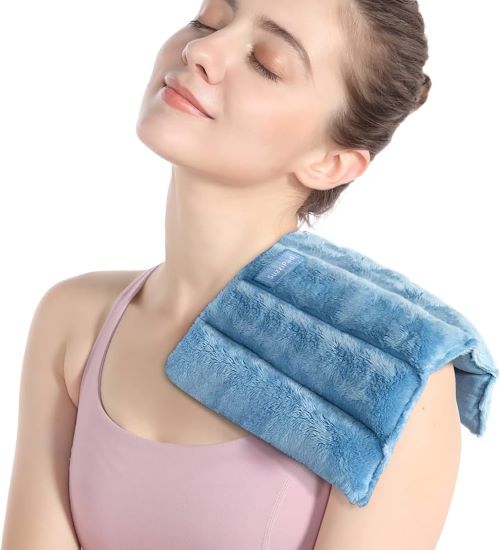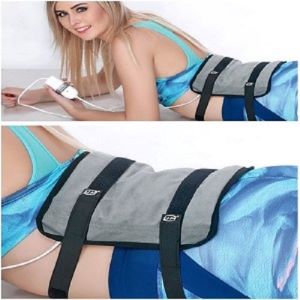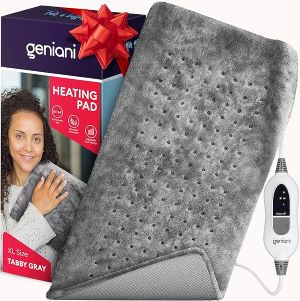Heating pads are a popular remedy for soothing aches and pains, providing warmth and comfort. As we turn to these devices for relief, a common question arises: how much electricity do heating pads actually use? Let’s delve into this quick guide to explore ways to conserve energy for heating pads and more.
What Is a Heating Pad?
A heating pad is simply an effective device created to generate warmth and provide comfort to sore muscles or to keep you warm on a cold day.
These pads typically consist of a heating element encased in a soft, insulating material. The heating element warms up when plugged into an electrical outlet. And it transfers heat to the pad’s surface. The fabric cover helps distribute the heat evenly while preventing direct contact between the heating element and the skin.
The user can adjust the temperature settings to suit their comfort level, allowing for a personalized and controlled heat therapy experience.
There are various types of heating pads catering to different needs:
Electric Heating Pads
These are the most common ones and are widely used. They contain an internal heating element that warms up when electricity passes through it. They usually come with flexible temperature settings.
Some of the major benefits you’ll get from these pads are adjustable temperature settings for personalized comfort and even distribution of heat over a specific area.
Infrared Heating Pads
Infrared heating pads use infrared rays to penetrate deep into the body, promoting circulation and providing therapeutic benefits. They are known for producing a gentler and more consistent heat.
The advantage of these pads is they claim deeper tissue penetration for more targeted relief. Some users prefer the sensation of infrared heat.
Chemical Heating Pads
These packs contain a mixture of chemicals that, when activated, generate heat. Activation methods include snapping, shaking, or kneading the pack. They provide heat for a specific duration, depending on the heating bag.
Chemical heating pads are portable and convenient for on-the-go use. They require no external heat source.
Electricity Usage of a Heating Pad
Heating pads are generally energy-efficient devices. Two things are important for understanding the electricity usage of a heating pad— Wattage and Kilowatt.
On average, a standard electric heating pad consumes around 50 to 150 watts per hour. Some heating pads can operate on as little as 20 watts at their lowest settings.
Kilowatt-hours (kWh) is the unit that is used to estimate energy usage over time. And this is also essential in estimating the cost of using a heating pad.
Mathematically, 1 kilowatt is equivalent to 1000 watts. So, if you’re using a 100-watt heating pad for one hour, it would consume 0.1 kWh of electricity.
What Influences Energy Usage?
When it comes to electricity, heating pads are measured in something called “watts.” Watts tells us how much power the heating pad uses. Here are some things that can affect how much electricity your heating pad guzzles:
Read: Uber Watts Review – A New Scam to Avoid?
Size and Power Rating (Wattage)
Size and The power rating (wattage) largely impact the power consumption of a heating pad. Low wattage heating pads might use less electricity. While pads with higher wattage generally consume more electricity.
For example, a medium-sized heating pad typically consumes approximately 0.08 kWh (80 watt-hours) of electricity per day. That would be around 2.4 kWh are used per month, and yearly, it would be 29.2 kWh.
Likewise, a big heating pad requires between 0.12 to 0.20 kWh (120–200 watts, while small mattress pads may use between 0.06 to 0.1 kWh (60–100 watts).
Duration of Use
The duration you use a heating pad also influences its power usage. The longer you keep your heating pad on, the more electricity it consumes.
Read: EnergySaver Pro Review
Type of Heating Pad
The type of heating pad can impact energy efficiency as well. For example, a USB heating pad uses less energy, while an electric one will often consume more energy, typically about 50-200 Watts. And there are Infrared heating pads that have an average electricity consumption of 100-300 Watts depending on their size and model.
Also, heating therapy pads generally have 10-70 wattage ranges, while medium blanket heating pads range between 70-150 wattage.
So, types also matter in the energy consumption of heating pads.
Temperature Settings
Heating pads often come with adjustable temperature settings. So that you can decide how much warmth you want. For more details on how much electricity your heating pad uses, you can check the user’s manual.
How To Calculate The Cost To Run A Heating Pad?
Calculating the cost to run a heating pad involves considering the wattage, duration of use, and the local electricity rate. And you just need this quick formula below:
Cost=Power (kW) × Time (hours) × Electricity Rate
For example, running a 100-watt or 0.1 kW heating pad for two hours at an electricity rate of $0.13 per kWh would cost:
0.1 kW × 2 hours × $0.13 =$0.026
So, running a 100-watt heating pad for two hours would cost approximately $0.026.
Read : How to Lower Electric Bill in Winter?
Some Energy-Efficient Heating Pad Alternatives
If you are into electricity-efficient heating pads, go with those that consume less electricity and have a lower wattage capacity.
Thermal Blankets: These are designed to warm your entire body. These blankets will offer you an energy-efficient alternative to heating pads, saving energy.
Insulated Heating Pad: It has an extra layer of insulation. This extra layer can hold heat for longer periods of time. Well-insulated pads may require less energy to maintain a desired temperature.
Reusable Gel Heat Packs: These packs contain a gel that can be heated or cooled, depending on the desired therapy. These heat pads, as the name suggests, are reusable. They can be used for injuries or to soothe sore muscles.
Hot Water Bottles: A classic solution, hot water bottles provide warmth without any electricity.
Conclusion
Heating pads, with their ability to alleviate discomfort, have become a staple for many seeking relief.



